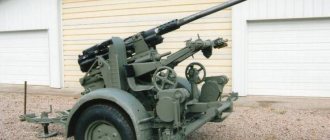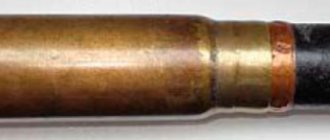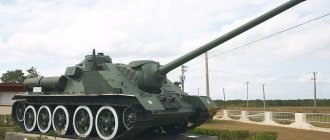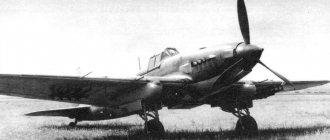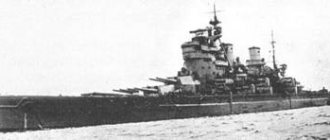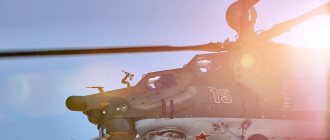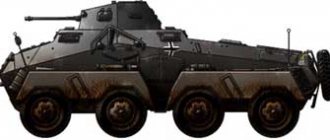German small-caliber anti-aircraft guns against Soviet aviation (part 7)
After Germany's defeat in World War I, the Treaty of Versailles prohibited it from owning or developing anti-aircraft artillery. The anti-aircraft artillery units recreated in the early 30s were called “railway battalions” until 1935 for the purpose of conspiracy, and the anti-aircraft artillery systems designed in Germany between 1928 and 1933 had the designation “mod. 18". Thus, in case of requests from Great Britain and France, the Germans could answer that these were not new guns, but old ones, designed in 1918, before the end of the First World War.
All this fully applied to the 37-mm anti-aircraft automatic gun 3.7 cm Flak 18 (German: 3.7 cm Flugzeugabwehrkanone 18) created by specialists of the Rheinmetall Borsig AG concern in 1929 based on the developments of the Solothurn Waffenfabrik AG company. The 37-mm machine gun was intended to combat aircraft flying at altitudes of up to 4000 m. Thanks to the high initial speed of the armor-piercing projectile, this weapon, before the advent of tanks with anti-ballistic armor, could hit any armored vehicle.
37-mm anti-aircraft gun 3.7 cm Flak 18 in firing position
The gun's automatic operation was powered by recoil energy with a short barrel stroke. The shooting was carried out from a pedestal carriage, supported by a cross-shaped base on the ground. In the traveling position, the gun was transported on a four-wheeled cart. The designers paid great attention to the ease of maintenance and maintainability of the anti-aircraft gun. In particular, threadless connections were widely used.
The 37-mm anti-aircraft gun 3.7 cm Flak 18 is rolled by crew forces
The 37-mm anti-aircraft gun 3.7 cm Flak 18 officially entered service in 1935 after lengthy military trials. To fire from a 37-mm anti-aircraft gun, a unitary shot known as 37x263B was used, which, in combination with a barrel length of 2106 mm, depending on the type and weight of the projectile, accelerated it to 800 - 860 m/s. The weight of the cartridge is 1.51-1.57 kg. An armor-piercing tracer projectile weighing 680 g accelerated to 800 m/s. The thickness of the armor penetrated by an armor-piercing tracer projectile at a distance of 800 m at an angle of 60° was 25 mm. The ammunition also included shots with fragmentation-tracer, fragmentation-incendiary and fragmentation-incendiary tracer grenades, an armor-piercing high-explosive projectile, as well as a sub-caliber armor-piercing tracer projectile with a carbide core.
Power was supplied from 6-round clips on the left side of the receiver. Rate of fire - up to 150 rounds/min. The weight of the gun in firing position is 1760 kg, in stowed position - 3560 kg. Calculation – 7 people. Vertical guidance angles: -7° to +80°. In the horizontal plane there was the possibility of all-round firing. Two-speed guidance drives. The maximum firing range at air targets is 4200 m.
Deployment of a 37 mm 3.7 cm Flak 18 anti-aircraft gun at a firing position
In general, the 37-mm anti-aircraft gun was fully functional and quite effective against aircraft at ranges of up to 2000 m, and could successfully operate against lightly armored ground targets and manpower within line of sight.
The baptism of fire of the 3.7 cm Flak 18 took place in Spain, where the weapon generally performed well. However, there were many complaints about the excessive weight in the transport position, the reason for which was the heavy and inconvenient four-wheeled “cart”. Despite the fact that by the beginning of World War II this 37-mm anti-aircraft gun was replaced in production by more advanced models, its operation continued until the end of hostilities.
Already in 1936, using the 3.7 cm Flak 18 artillery unit and a new carriage, the 3.7 cm Flak 36 anti-aircraft gun was created. The weight of the system in the combat position was reduced to 1550 kg, and in the stowed position - to 2400 kg. While maintaining the ballistic characteristics and rate of fire of the previous modification, the vertical aiming angles were increased within the range from -8 to + 85°.
3.7 cm Flak 36 in stowed position
Such a significant weight reduction was achieved mainly due to the transition to a new four-frame carriage with a detachable two-wheel sprung ride. It was transported at speeds of up to 50 km/h. The cannon was installed on and removed from the cart using a chain winch. The ballistic characteristics and rate of fire of the gun remained at the same level.
37-mm anti-aircraft machine gun 3.7 cm Flak 37 at a firing position in northern Italy, 1944
The next modification of the 3.7 cm Flak 37 introduced an improved Sonderhänger 52 anti-aircraft sight with a counting device. The fire control of the anti-aircraft battery was carried out using a Flakvisier 40 rangefinder. Thanks to this, it was possible to significantly increase the efficiency of shooting at distances close to the maximum. From earlier models, the 3.7 cm Flak 37 in firing position can be distinguished by a modified barrel casing, which is due to a simplification of the production technology.
In addition to standard carriages, 3.7 cm Flak 18 and Flak 36 anti-aircraft guns were installed on railway platforms, various trucks and armored personnel carriers. In 1940, production of anti-aircraft self-propelled guns began on the chassis of the 5-ton Sd.Kfz.6 half-track tractor, designated Sd.Kfz.6/2.
Crew of the German 37-mm Flak 36 anti-aircraft gun on the Sd.Kfz self-propelled gun. 6/2
The unarmored ZSU weighing 10.4 tons was armed with a Flak 36 cannon, and its crew consisted of 5 people. A total of 339 self-propelled guns were transferred to the Wehrmacht. However, in the conditions of the Eastern Front, unarmored self-propelled guns suffered heavy losses. This was especially true when repelling low-altitude bombing attacks by Soviet aviation and in the case of providing fire support to ground units.
In 1942, on the basis of the 8-ton half-track tractor SdKfz 7, a self-propelled gun system was created, which was put into service under the designation Sd.Kfz.7/2. This self-propelled gun weighed 11.05 tons and was armed with a 37-mm Flak 36 cannon. Based on the experience of combat use, the anti-aircraft self-propelled gun received light armor protection for the engine and driver's cabin. Until January 1945, more than 900 of these self-propelled guns were built, most of them fought on the Eastern Front.
ZSU Sd.Kfz.7/2 in a firing position
Unlike towed 37-mm anti-aircraft guns deployed at prepared firing positions as part of a battery, the crew of an anti-aircraft self-propelled gun when firing at air targets, due to more cramped conditions, as a rule, did not use an optical rangefinder, which negatively affected the shooting accuracy. In this case, adjustments were made to the sight during firing, based on the trajectory of the tracer shells relative to the target.
ZSUs with 37-mm anti-aircraft guns on the chassis of half-tracked transporters were actively used on the Eastern Front, operating mainly in the front-line zone. They were involved in escorting transport columns and were part of an anti-aircraft division that provided air defense for some tank and motorized (panzergrenadier) divisions. Compared to anti-aircraft self-propelled guns armed with 20-mm and 30-mm machine guns (especially with quadruple ones), 37-mm guns had a lower combat rate of fire. But much heavier and more powerful 37-mm shells made it possible to fight air targets flying at a range and altitude inaccessible to smaller caliber anti-aircraft guns. With close values of the initial velocity, the 37-mm projectile weighed one and a half to two times more than the 30-mm (640 - 680 g versus 330 - 500 g), which ultimately determined a significant superiority in muzzle energy (215 kJ versus 140) .
Experience in combat use has demonstrated that the partially armored anti-aircraft self-propelled gun Sd.Kfz.7/2 turned out to be more adapted to the realities of the Eastern Front than the 20-mm self-propelled gun on a tank and half-track chassis. A 37-mm high-explosive projectile weighing 640 g, containing 96 grams of TNT mixed with pentrite, upon impact, caused critical damage to Il-2 and Il-10 attack aircraft. The best height reach made it possible to use the 37-mm ZSU against medium-altitude targets in the interests of air defense of various types of ground-based stationary objects. In addition, in the event of a breakthrough by Soviet tanks, 37-mm self-propelled guns often played the role of a mobile anti-tank reserve. At a range of up to 500 m, armor-piercing shells could quite confidently overcome the protection of light and medium tanks. In the case of targeted use against armored vehicles, the ammunition load of 37-mm anti-aircraft guns could include a sub-caliber projectile weighing 405 g, with a tungsten carbide core and an initial speed of 1140 m/s. At a distance of 600 m, normally it penetrated 90 mm armor. But due to the chronic shortage of tungsten, 37-mm sub-caliber projectiles were not used often. In addition, the occasional use of the Sd.Kfz.7/2 ZSU against Soviet tanks was a purely necessary measure.
Damaged Sd.Kfz.7/2 self-propelled gun
The crew of the 37-mm self-propelled guns was partially covered only by an 8-mm anti-fragmentation shield, and the thin armor of the cabin and engine compartment protected them from rifle-caliber bullets fired from a distance of no closer than 300 m. The German self-propelled guns could not withstand a direct collision even with light tanks, and were able to operate successfully only from an ambush.
In general, the 3.7 cm Flak 36 and 3.7 cm Flak 37 assault rifles met the requirements for 37 mm anti-aircraft guns. However, when firing at fast-moving air targets, it was highly desirable to increase the combat rate of fire. In 1943, the 37-mm towed anti-aircraft gun 3.7 cm Flak 43, created by Rheinmetall Borsig AG, entered service. The vertical pointing angle of the barrel was increased to 90°, and the operating principle of the artillery unit's automation was significantly redesigned. The short stroke of the barrel during recoil was combined with a gas release mechanism that unlocked the bolt. Due to this, it was possible to combine several operations and reduce the time required to perform all actions when firing a shot.
3.7 cm Flak 43 on display in a museum
Simultaneously with increasing the rate of fire to 250 rounds/min, due to the introduction of an effective spring-hydraulic damper, it was possible to reduce recoil and shock loads on the gun frame. Thanks to this, the mass of the gun in the combat position was 1300 kg, in the transport position - about 2000 kg. To increase the practical rate of fire to 100 rounds/min and the length of the continuous burst, the number of shots in the clip was increased to 8 units. The weight of a clip with 8 shots is about 15 kg.
The barrel length, ammunition and ballistics of the Flak 43 remained unchanged compared to the Flak 36. The gun was transported on a single-axle sprung trailer, with pneumatic and hand brakes, as well as a winch for lowering and raising the gun when transferring it from the traveling position to the combat position and back. In exceptional cases, shooting from a cart was allowed, but the horizontal firing sector did not exceed 30°. The Flak 43 artillery unit was mounted on a triangular base with three frames on which it rotated. The frames had jacks for leveling the anti-aircraft gun. The lifting mechanism is sectoral, with one aiming speed. The rotary mechanism had two aiming speeds. The balancing of the swinging part was carried out by a balancing mechanism with a spiral spring.
Taking into account the experience of combat operations, the new anti-aircraft gun had a steel shield with two folding side flaps, which reduced the vulnerability of the crew when repelling air attacks and shelling from the ground. To increase the effectiveness of anti-aircraft fire, guidance from a single anti-aircraft fire control device was adopted as the main one. At the same time, for use outside the anti-aircraft battery on the 3.7 cm Flak 43, individual sights were retained. In the Wehrmacht, towed 3.7 cm Flak 43 anti-aircraft guns were combined into batteries of 9 guns. A Luftwaffe anti-aircraft battery placed in stationary positions could have up to 12 37 mm guns.
As with other 20-37 mm rapid-fire anti-aircraft guns, the 3.7 cm Flak 43 was used to create a self-propelled gun. Initially, they tried to mount the new 37-mm anti-aircraft gun on the chassis of the SdKfz 251 half-track armored personnel carrier. However, the troop compartment of the armored personnel carrier turned out to be too cramped to accommodate a sufficiently massive anti-aircraft gun, crew and ammunition. In this regard, specialists from Friedrich Krupp AG followed the already beaten path, creating a 37-mm version of the “Furniture Car”. By analogy with the quad 20-mm self-propelled gun on a tank chassis, restored Pz tanks were used to manufacture the 37-mm anti-aircraft self-propelled gun. Kpfw IV modifications H and J with a dismantled turret.
Anti-aircraft self-propelled gun 3.7 cm FlaK 43 auf Pz.Kpfw.
IV in the traveling position A box of 20-mm armor plates was assembled around the anti-aircraft gun in the transport position, which could protect the gun and crew from bullets and light shrapnel. Sometimes, to maintain the ability to fire from a traveling position, a cutout was made in the front plate. When conducting anti-aircraft fire, the armor plates were folded back, forming a flat platform. The weight of the ZSU in combat position was within 25 tons, mobility was at the level of the base chassis. The crew of the car consisted of six people. Although the self-propelled gun was originally called Flakpanzerkampfwagen IV (German literally - Anti-aircraft combat tank IV), the name Möbelwagen (German Furniture Wagon) took more root.
ZSU 3.7 cm FlaK 43 auf Pz.Kpfw. IV in combat position
The first 37-mm ZSU on a medium tank chassis were sent to the troops in March 1944. By August 1944, self-propelled guns 3.7 cm FlaK 43 auf Pz.Kpfw. IV "Möbelwagen" were equipped with separate anti-aircraft divisions (8 vehicles each) of three tank divisions on the Western Front and two tank divisions on the Eastern Front.
ZSU 3.7 cm FlaK 43 auf Pz.Kpfw. IV prepared for sending to the front
Subsequently, a number of tank brigades were equipped with mixed anti-aircraft divisions, which included 4 ZSU with 37-mm anti-aircraft guns and 4 ZSU with 20-mm machine guns. The exact number of 37 mm “Furniture Cars” built is now impossible to establish. Most sources agree that just over 205 units were produced.
ZSU 3.7 cm FlaK 43 auf Pz.Kpfw. IV had a number of significant disadvantages. To transfer the installation from the traveling position and back, it was necessary to unfold and lift the heavy armor plates, which required time and considerable physical effort. At the firing position, the entire crew of the installation, except for the driver, was on an open platform and was very vulnerable to bullets and shrapnel. In this regard, it was considered advisable to create an anti-aircraft self-propelled gun with a turret. Since the gunner had to be able to independently detect air targets, and when firing a 37-mm machine gun, a large amount of powder gases entered the fighting compartment along with spent cartridges, the turret had to be made open at the top.
ZSU Flakpanzer IV "Ostwind"
In July 1944, Ostbau Werke produced the first prototype of the ZSU with a 37-mm FlaK 43 anti-aircraft gun installed in a rotating turret on the chassis of the Pz.Kpfw IV tank. The armor thickness of the hexagonal turret was 25 mm. The turret housed a 37-mm Flak43 automatic anti-aircraft gun, sighting devices, combat crews and 80 rounds in cassettes. The rest of the ammunition in the amount of 920 rounds was in the turret boxes. The ZSU crew consisted of 5 people.
ZSU Flakpanzer IV "Ostwind" and Flakpanzer IV "Wirbelwind"
The ZSU, designated 3.7 cm Flak 43 auf Sfl Pz.Kpfw IV, subsequently became better known as Flakpanzer IV “Ostwind” (German: Anti-aircraft tank IV “East Wind”). Compared to the Pz. Kpfw IV, which were mass-produced at that time, the security of the anti-aircraft self-propelled gun was less. The creators of the ZSU quite reasonably considered it unnecessary to install anti-cumulative screens on it, since it was not supposed to operate in the first line of battle formations. In August 1944, an order was placed for the production of 100 vehicles. Serial production of the Flakpanzer IV "Ostwind" was established at the Deutsche Eisenwerke plant in Duisburg, but before the collapse of Nazi Germany, no more than 50 self-propelled anti-aircraft guns were delivered.
As in the case of other ZSUs based on the Pz.Kpfw IV, tanks restored after battle damage were mainly used as a base. There were also plans to create a 37-mm self-propelled gun on the chassis of the obsolete Pz.Kpfw.III and Pz.Kpfw.38(t) tanks, but the practical implementation of these projects never came to fruition. In fairness, it is worth saying that the German “anti-aircraft tank” Flakpanzer IV “Ostwind was the best in its class and during the war had no serial analogues in other countries.
The twin 37 mm anti-aircraft gun was designated Flakzwilling 43 (German: Gemini 43). The artillery machine guns were located one above the other, and the cradles on which the machine guns were mounted were connected to each other by a rod forming a parallelogram joint. Each machine gun was located in its own cradle and formed a swinging part, rotating relative to its ring axles.
Twin 37-mm anti-aircraft gun Flakzwilling 43
With the machine guns positioned vertically, in the event of a shot from one barrel, there was no dynamic moment of rotation in the horizontal plane that would disrupt aiming. Thanks to the presence of trunnions individual for each machine gun, disturbances affecting the swinging part of the anti-aircraft gun were minimized. This design solution improved the accuracy of fire and the conditions for aiming the gun, and also in the event of failure of one gun, it was possible to fire from the second without disrupting the normal aiming process. It was also possible to use machines from single installations without any modifications.
Twin 37-mm Flakzwilling 43 anti-aircraft gun in a firing position
The disadvantages of this scheme are a continuation of the advantages: with a vertical arrangement, the height of the entire anti-aircraft installation and the height of the firing line increased. In addition, this arrangement is only possible for machines with side feeding.
In general, the creation of a twin 37 mm installation justified itself. The weight of the Flakzwilling 43 compared to the Flak 43 has increased by approximately 40%, and the combat rate of fire has almost doubled.
Work was also carried out on a horizontally coupled 37-mm anti-aircraft installation using the Flak 43 artillery unit. It was planned to be installed on a self-propelled gun system created on the basis of the Pz.Kpfw.V “Panther” tank.
The prototype of the vehicle, designated Flakzwilling 3.7cm auf Panzerkampfwagen Panther, was built in 1944 and had only a mock-up turret. Due to the overload of German industry with military orders, this project remained in development.
Until March 1945, the Wesserhutte and Durrkopp factories produced 5,918 37-mm Flak 43 anti-aircraft guns, and 1,187 Flakzwilling 43 spark guns. The 3.7-cm Flak 43 and Flakzwilling 43 anti-aircraft automatic guns were in service with air defense units, both in the Luftwaffe and in Wehrmacht, and were widely used at the final stage of World War II. Despite the higher level of combat characteristics, the Flak 43 was not able to completely displace the Flak 36/37 from the production lines - the production of various types of 37-mm anti-aircraft guns was carried out until the end of the war.
In 1945, they tried to adapt a significant part of the available 37-mm anti-aircraft guns for firing at ground targets. Thus, the German command intended to plug the gaps in the anti-tank defense, while at the same time the anti-aircraft guns were supposed to provide air defense to the front line. Due to low mobility, automatic anti-aircraft guns were used mainly in pre-equipped positions in defense centers. Thanks to good armor penetration for their caliber and high rate of fire, they posed a certain danger to medium Soviet T-34 tanks and light armored vehicles. Their fire was especially destructive in cities, where camouflaged anti-aircraft guns were able to fire from a minimum distance.
The ending follows...
Based on materials: https://military.wikireading.ru/7540https://safe-rgs.ru/4218-37-cm-flak-43-nemeckaya-zenitnaya-avtomaticheskaya-pushka.html https://drittereich.info/ modules.php?name=Forums&file=viewtopic&t=972 https://www.ww2technik.de/sites/dflak/3.7%20cm%20flak%2043.htm https://www.tanks-encyclopedia.com/ww2- nazi_germany-mobelwagen/ https://ww2history.ru/2826-nemeckie-zenitnye-samokhodnye-ustanovki-vremen.html https://wwii.space/zenitnyie-orudiya-germaniya/
Aviation version
Main article: BK 3.7
Ju 87G with two BK 3.7 underwing modules
An earlier version of the 37 mm Flak 18
was adapted for aviation use as
the BK 3.7
, the lightest model of the
Bordkanone series heavy gun that
was used in Luftwaffe aircraft during the war.
The BK 3.7 was typically used for ground attack or bomber-destroyer missions. Mounted inside self-contained gun pods or in a conformal pod style flat surface mounted gunpod hull, the use of the BK 3.7 saw on the Ju 87G Panzerknacker
("tank burglar") version of the Stuka dive bomber, as flown with great success by Rudel, the Ju 88P- 2 and s-3 subtypes, and twin-engine attack aircraft Hs 129 B-2/R3.
Comparison of anti-aircraft guns
| A country | Pistol model | RPM | Projectile Weight | Fire weight per minute |
| Nazi Germany | 3.7 cm Flak 18/36/37 | 120 | 0.64 kg (1.4 lb) | 76.8 kg (169 lb) |
| Nazi Germany | 3.7 cm SK C/30 | 30 | 0.74 kg (1.6 lb) [8] | 22.2 kg (49 lb) |
| France | Canon de 37 mm Modèle 1925 | 15–21 | 0.72 kg (1.6 lb) [9] | 10.8–15.12 kg (23.8–33.3 lb) |
| Italy | Cannone-Mitragliera da 37/54 (Breda) | 60–120 | 0.82 kg (1.8 lb) [10] | 49.2–98.4 kg (108–217 lb) |
| United States | 37 mm M1 gun | 120 | 0.87 kg (1.9 lb) | 104.4 kg (230 lb) |
| Soviet Union | 37-mm automatic air defense gun mod. 1939 (61-K) | 80 [11] | 0.73 kg (1.6 lb) [12] | 58.4 kg (129 lb) |
| United Kingdom | QF 2-pounder naval gun | 115 | 0.91 kg (2.0 lb) [13] | 104.6 kg (231 lb) |
| Sweden | 40 mm Bofors gun | 120 | 0.9 kg (2.0 lb) [14] | 108 kg (238 lb) |
Notes
- ^ B s d e g Ivanov, A. (2003). GERMAN ARTILLERY IN THE SECOND WORLD WAR. pp. 41–48. ISBN 978-5-7654-2634-0.
- ^ ab Third Axis - Fourth Ally, page 30
- [1], Encyclopedia of World War II Weapons
, Chris Bishop, pp. 167-8 - ↑
Hogg,
German artillery of World War II - PzGr.
18 cast iron armor-piercing high-explosive fragmentation ammunition. - ↑
Third Axis - Fourth Ally, page 75 - Carruthers, Bob (2012). German tank hunters - Panzerjäger. Archive Media Publishing Ltd. ISBN 978-1781581384.
- DiGiulian, Tony. "Germany 3.7 cm/83 SK C/30 - NavWeaps". www.navweaps.com
. Retrieved June 7, 2022. - DiGiulian, Tony. "France 37mm/50 (1.46") Model 1925 and Coal Model 1933 - NavWeaps". www.navweaps.com
. Retrieved 2017-06-07. - DiGiulian, Tony. "Italy 37mm/54 (1.5") Models 1932, 1938 and 1939 - NavWeaps". www.navweaps.com
Verified. 2017-06-07. - Foss, Christopher (1977). Jane's Pocket Book of Towed Artillery
. New York: Collier. p. 229. ISBN 0020806000. OCLC 911907988. - DiGiulian, Tony. "Russia / USSR 37 mm / 67 (1.5″) 70-K - NavWeaps". www.navweaps.com
. Retrieved June 07, 2022. - DiGiulian, Tony. "United Kingdom/UK 2-pounder QF Mark VIII - NavWeaps". www.navweaps.com
. Retrieved June 7, 2022. - DiGiulian, Tony. "USA Bofors 40 mm/60 Model 1936 - NavWeaps". www.navweaps.com
. Retrieved June 7, 2022.
Sources
| Wikimedia Commons has media related to 3.7 cm FlaK 18/36/37/43. |
- Gander, Terry and Chamberlain, Peter. Weapons of the Third Reich: An Encyclopedic Survey of All Small Arms, Artillery and Special Weapons of the German Ground Forces 1939-1945
. New York: Doubleday, 1979 ISBN 0-385-15090-3 - Hogg, Ian. Artillery of the twentieth century. New York: Barnes & Noble Books, 2000. ISBN 0-7607-1994-2 Pg.107
- Hogg, Ian W. German Artillery of the Second World War
. 2nd revised edition. Mechanicsville, PA: Stackpole Books, 1997 ISBN 1-85367-480-X
